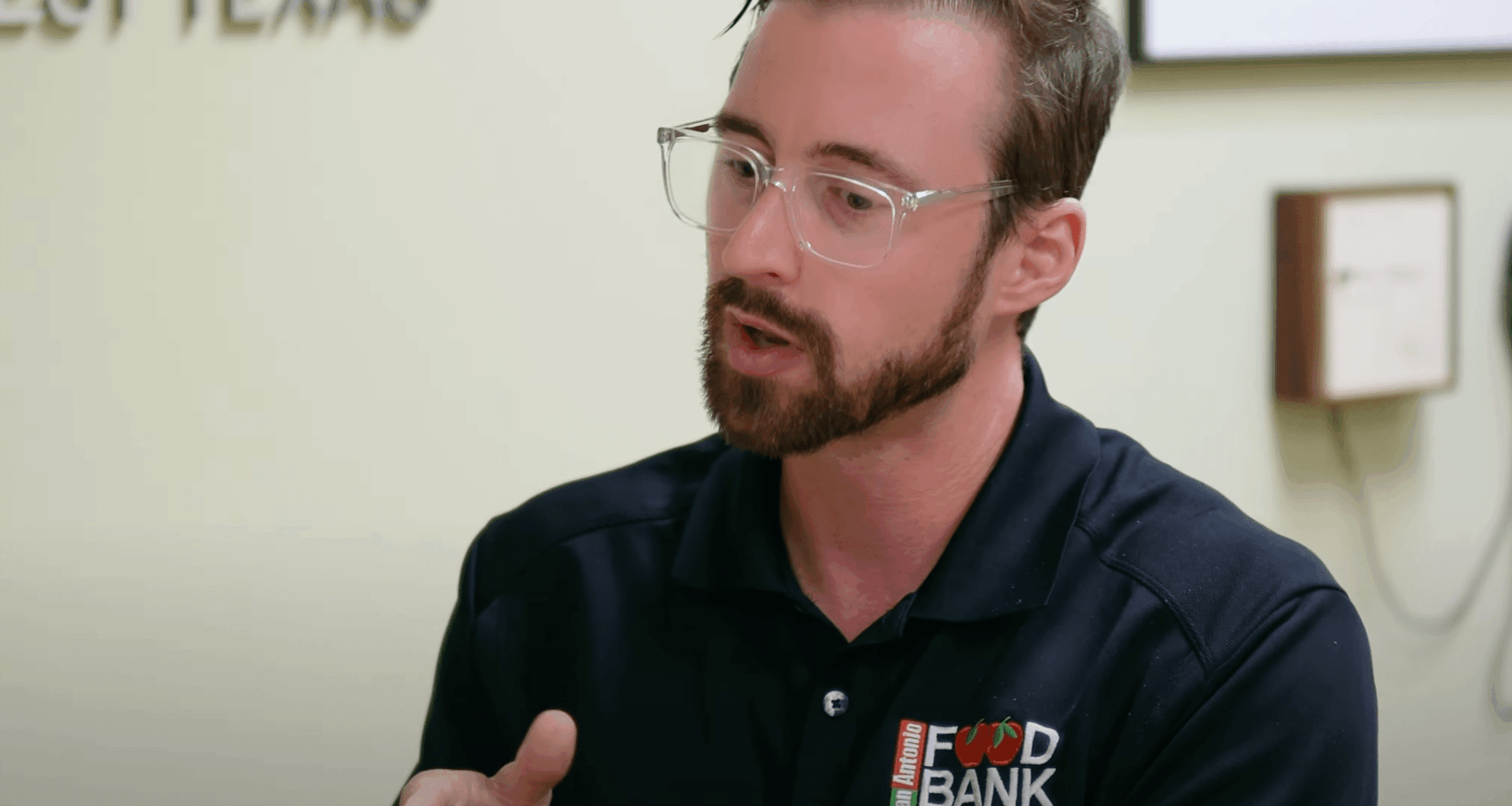Local food supply chains fluctuate with changes in climate and international affairs. The San Antonio Food Bank is working on ways to make farming more sustainable and efficient, trying to insulate the region’s food supply from shifting environmental and political winds.
More than 100,000 people rely on the SA Food Bank each week. Much of the food the bank distributes is fresh produce harvested by the nonprofit’s employees and volunteers. The food bank has 75 ares of land dedicated to agriculture, rotating through many crops: from nopal cactus to figs and potatoes.
Director of food sustainability Mitch Hagney said the farming efforts fit into the food bank’s larger goal: providing food for today, tomorrow and a lifetime.
On the latest episode of bigcitysmalltown, host Cory Ames interviewed Hagney, a big proponent of combining agriculture and environmental sustainability efforts to “cross-cut” benefits.
Operating since 2012, the farming programs was initially set up to make sure the food bank had a steady supply of produce, Hagney said. It’s slowly transformed into a way for the city’s residents to “connect” with agriculture.
The food bank’s farmland is split between two locations: 25 acres at the food bank’s Westside headquarters and 50 acres attached to Mission San Juan on the South Side. Hagney said the land has its own advantages and challenges.
Summers in San Antonio are very hot, making it difficult to produce goods like tomatoes. In some parts, the soil is also very thin, especially when farther from rivers and other water sources. On the other hand, Hagney explained, winters are very productive since temperatures don’t drop too much too often.
San Antonio winters are especially productive for crops like cabbages, brassicas and root vegetables.
Keeping sustainability and future food needs in mind, Hagney’s team implements several strategies to keep the land fertile and keep a solid baseline of food production. The food bank rotates crops, deals with weeds mechanically instead of chemically and plants crops that come naturally to the regions like nopales and figs.
The farming team also plans their planting on perennial timelines instead of seasonal timelines.
“You have to think long-term,” Hagney said. “It’s not to just extract as much as we can for this season, but to make sure that we’re sowing the seeds and increasing the fertility of the ground to protect the food supply as we move forward.”
Outside of the food bank’s own farming efforts, Hagney has ideas outlining how local governments and residents can contribute to environmental sustainability and food security.
A study by the food bank found that the city owns about 16,000 acres of viable land for agriculture. Hagney also suggested planting trees that can tolerate floods, like pecans and figs, in designated flood planes instead of residential and commercial development.
Urban agriculture can’t solve the hunger problem, Hagney said, but it can establish a baseline volume of food while providing environmental benefits.
On a cultural level, Hagney said residents should consider buying and consuming foods that are more resilient to the region’s environment, shifting the culinary scene and prioritizing locally grown crops. San Antonio should take advantage of its proximity to Mexican and indigenous culture, he added, letting it influence the way people eat.
To improve San Antonio’s agriculture scene, Hagney said the region needs more farmers, more protections for farmlands against residential and commercial efforts and shifted culinary practices.
“Everything about agriculture in the region can be better,” he said. “It requires changing what’s on our plate. It requires us thinking seasonally, and it requires thinking about agriculture as land use with other aspects.”
